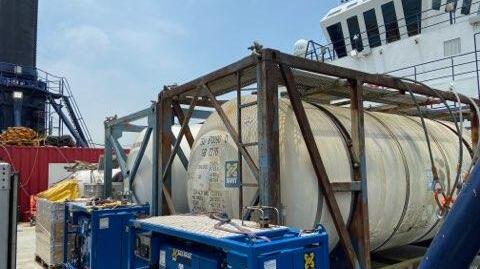Salvage crews have completed the removal of diesel fuel from SEACOR Power’s fuel tanks.
Related: Search ends for Seacor Power crew
The commercial lift boat capsized in severe weather 8 miles off the Louisiana Coast in mid-April. Of the 19 passengers and crew on board, six were rescued. Six were recovered deceased and seven were never found.
According to the Coast Guard, crews removed about 20,363 gallons of diesel fuel from the SEACOR Power using the hot tapping method. This involved drilling into the fuel tanks, making a hose connection and transferring the fuel to portable tanks.
Approximately 4,500 gallons of hydraulic fluid remain on the vessel, but crews are having trouble reaching the tanks. The hydraulic fluid will be removed after crews raise the vessel, which is partially underwater.
The Coast Guard continues to look for any oil discharges, and SEACOR Marine Holdings (NYSE: SMHI) has an Oil Spill Response Organization (OSRO) standing by to respond to any situation in which there is recoverable oil.
Crews will now focus on removing debris and refloating the vessel.
The timeline for raising the SEACOR Power depends on many factors, including the safety of salvage crews, the weather and addressing any new structural changes that may arise. The raising of the vessel is not expected to occur before June.
Related: Crews start removing fuel after deadly SEACOR Power capsizing
A Coast Guard safety zone covers a 1-nautical-mile radius around the accident site, in effect until June 15.
A Federal Aviation Administration temporary flight restriction covering a radius of 5 nautical miles and a 2,000-foot minimum altitude around the site are in effect until June 15.
The incident is under investigation by the National Transportation Safety Board and the Coast Guard.
Click here for more FreightWaves articles by Nick Austin.
You might also like:
I-40 bridge over Mississippi River to remain closed indefinitely
Vessel traffic flowing again on Mississippi River under I-40











